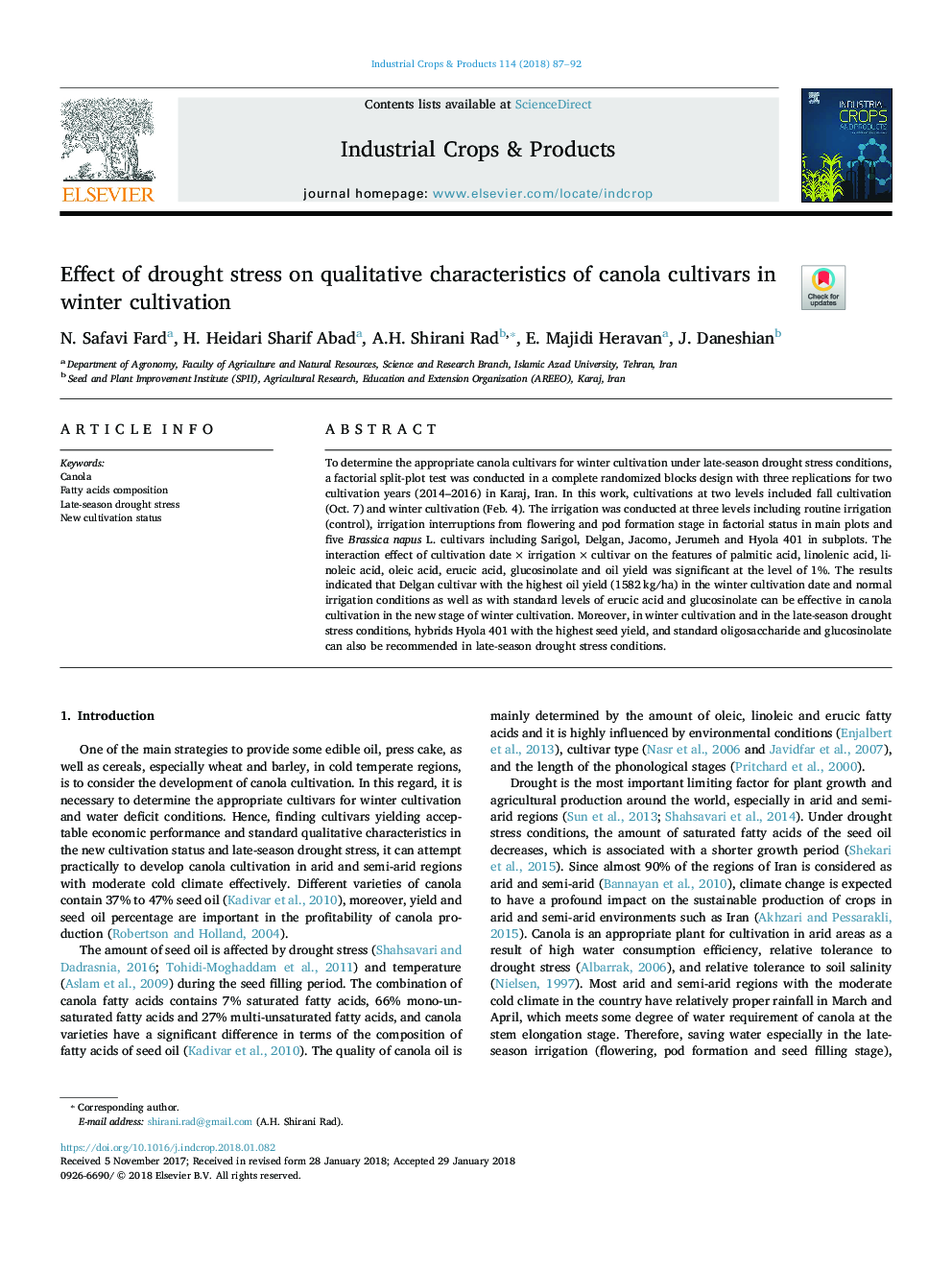| Article ID | Journal | Published Year | Pages | File Type |
|---|---|---|---|---|
| 8880395 | Industrial Crops and Products | 2018 | 6 Pages |
Abstract
To determine the appropriate canola cultivars for winter cultivation under late-season drought stress conditions, a factorial split-plot test was conducted in a complete randomized blocks design with three replications for two cultivation years (2014-2016) in Karaj, Iran. In this work, cultivations at two levels included fall cultivation (Oct. 7) and winter cultivation (Feb. 4). The irrigation was conducted at three levels including routine irrigation (control), irrigation interruptions from flowering and pod formation stage in factorial status in main plots and five Brassica napus L. cultivars including Sarigol, Delgan, Jacomo, Jerumeh and Hyola 401 in subplots. The interaction effect of cultivation dateâ¯Ãâ¯irrigationâ¯Ãâ¯cultivar on the features of palmitic acid, linolenic acid, linoleic acid, oleic acid, erucic acid, glucosinolate and oil yield was significant at the level of 1%. The results indicated that Delgan cultivar with the highest oil yield (1582â¯kg/ha) in the winter cultivation date and normal irrigation conditions as well as with standard levels of erucic acid and glucosinolate can be effective in canola cultivation in the new stage of winter cultivation. Moreover, in winter cultivation and in the late-season drought stress conditions, hybrids Hyola 401 with the highest seed yield, and standard oligosaccharide and glucosinolate can also be recommended in late-season drought stress conditions.
Keywords
Related Topics
Life Sciences
Agricultural and Biological Sciences
Agronomy and Crop Science
Authors
N. Safavi Fard, H. Heidari Sharif Abad, A.H. Shirani Rad, E. Majidi Heravan, J. Daneshian,
